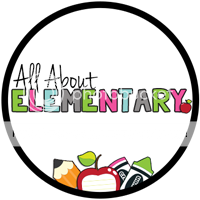1- Integrating reading into Social Studies and Science. I always like to integrate reading passages and children's books into Social Studies and Science because it is a great way for students to get the information that is the objective of the lesson. It also gives students more opportunities to practice their reading skills. One thing that is really important with integrating reading in the content areas is supporting students who may struggle to read or if the books or reading passages are too hard for them. This can be done by having students partner read. It can also be done by you reading the content to the students and then they read it with a partner. The important thing to remember when integrating reading is that the content students are reading is aligned to the Science and Social Studies standards for your grade level. Many times students read books that are non-fiction and fit into the subject areas of Social Studies and Science. Those are great books to read. However, if they are not meeting your grade level standards than it should not be considered as teaching Science or Social Studies during that time.
2- Incorporating time for discussion. Students need time to discuss what they are thinking and learning about. Allowing time for discussion helps students to process what they are learning and hopefully they can make meaningful connections to the content. It is also a great way for you as a teacher to informally assess what students are learning, what their prior knowledge is, and where you may need to go next with your lesson.
3- Inquiry is an important part of the Social Studies and Science classroom. Incorporating inquiry into your classroom could be done through experiments or research. I love to give students time to research a topic. It gets students reading, writing, and thinking about the topic in a deeper way. It also helps students see that there are multiple perspectives in history. Inquiry can take a lot of time and if you only are spending 30-45 minutes a day on Science or Social Studies, students will need a longer amount of time to finish research projects. It may take a couple of weeks to get a single topic completed. Inquiry works great in groups so allowing students to work together to find information and share their thinking is helpful.
4- Station teaching is another way to teach Science and Social Studies. It may be beneficial for your classroom to set up different stations on a certain topic. This is a great way for students to learn a topic and explore it in different formats. For example, there may be a reading station, inquiry station, game station, and a writing/discussion station. Students can work in groups and go through each station. The reading station would contain a variety of books on the topic students are studying at different levels. Students would read the books and complete an exit ticket of what they learned. The inquiry station would be where students are researching or doing an experiment. The game station would include a game on the topic and could be task cards or a memory game. The writing/discussion station would have discussion questions that students could choose from and discuss with their groups. They would then write their thinking down and turn it in.
These are some suggestions that hopefully you find helpful. It is important that students are learning Social Studies and Science in the classroom. You can even explain to students when they are using Science and Social Studies throughout the day and may not even realize it. For example they use Social Studies in other subjects such as working in groups, getting along, and following classroom expectations. These are all things they are doing as citizens in the classroom.
















No comments